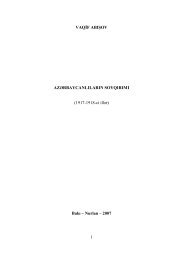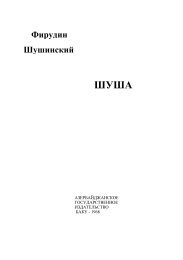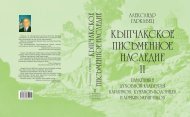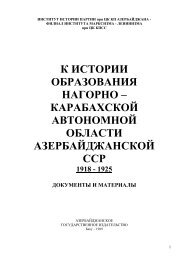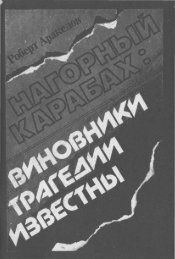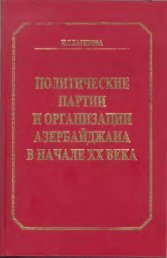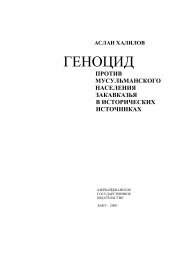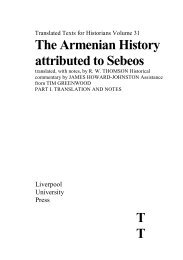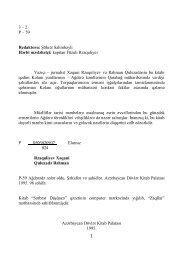ARMENIAN - Erevangala500
ARMENIAN - Erevangala500
ARMENIAN - Erevangala500
You also want an ePaper? Increase the reach of your titles
YUMPU automatically turns print PDFs into web optimized ePapers that Google loves.
the fact that the overwhelming majority o f "the Kurds"<br />
had no sympathy for the PK K whatsoever - after all, a<br />
huge number o f Turks o f Kurdish extraction had fallen<br />
victim to these madmen.<br />
Where does this strange sympathy come from?<br />
Does it perhaps have something to do with depth psychology,<br />
something to do with the mythical - or to put it more exactly,<br />
fictitious - founders o f the two states o f Switzerland and<br />
Armenia?<br />
Whatever the case, the NZZ were not at all shy o f falsifi<br />
cations o f any kind, whether home-made or adopted from<br />
elsewhere, as is shown unambiguously by two photo<br />
graphs from the newspaper. On the left-hand picture, the<br />
falsifier went to the trouble o f covering up the mountains<br />
in the background, but failed to see the window in the<br />
taller building, while cleverly covering up the buildings<br />
in the middle ...<br />
It is o f no importance whether these manipulations were<br />
carried out beforehand or whether they were done in the<br />
NZZ's workshop. In any case, even a semi-educated lec<br />
tor should have noticed these falsifications, and this was<br />
not the case, whether on purpose or not.<br />
This imposing monument shows William Tell, who never<br />
really existed, in spite o f Friedrich Schiller's play and<br />
Giuseppe Verdi's opera. Schiller created another myth in<br />
his Don Carlos, and again, Verdi gratefully made it his<br />
own. Somehow, it all reminds one o f that other master<br />
136<br />
piece, the ".Forty Days o f Musa Dagh ", in that although it<br />
has hardly anything to do with reality it still has a certain<br />
effect in reality.<br />
The story o f William Tel! is a myth, and there is nothing<br />
wrong with that, whether we are talking about the Swiss<br />
with their legendary figure o f Tell, or the Armenians (the<br />
Haik), whose "HAIK” gave them their "raison d'etre".<br />
Confederates did in fact exist who defended themselves<br />
with the crossbow against those they considered to be<br />
enemies. Many Swiss know that, but fo r the majority it is<br />
probably a matter o f indifference. Could it be that this<br />
foundational story has something to do with their absurd<br />
sympathy fo r the Haik?<br />
This powerful work o f art standing in the middle o f<br />
Eriwan is a representation o f Haik. Who was that?<br />
Originally, Haik was probably a pagan god. But after<br />
Christianization things moved fa st and he mutated into a<br />
direct descendant o f the Archpatriarch Noah - the fact<br />
that his name does not even appear in the Bible seems not<br />
to have been a problem. On that point the Haik are nothing<br />
if not generous, and even go so fa r as to call the country<br />
HAYASTAN. There are only a few countries<br />
(Columbia, Bolivia, Saudi Arabia) which are named after<br />
historical personalities. But after a figure from legend?<br />
This question may at first seem superfluous or irrelevant,<br />
but this is not the case with HAYASTAN. In fact, it hits the<br />
nail right on the head in that the matter is quite irrational.<br />
The answer can only be: That is the politics o f<br />
Hayastan and its diaspora, which is quite incomprehensible<br />
in rational terms.



